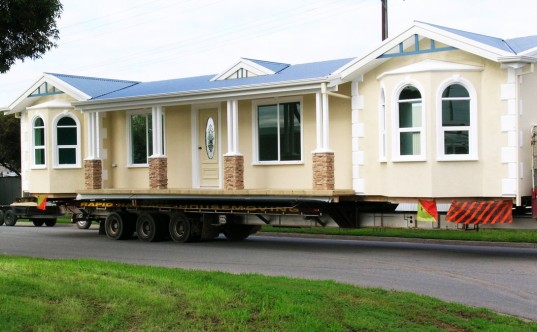
A home delivery inspection is an important part of ensuring that all customers receive the manufactured home of their dreams. As with any large purchase, delivery and setup can be a bit of a hassle, and while all homes are built to the exact standards of the manufacturer before they leave the factory, there is always the possibility that something doesn’t sit quite right upon arrival. That’s why we recommend that home buyers educate themselves about the home inspection process and set aside time to do a thorough inspection. Here’s what you can expect:
The Home Inspection Checklist
Your new home manufacturer will send a representative out to your location to oversee the delivery and installation process. This representative may give you a home inspection checklist that you can follow along with after the delivery is complete (every dealer is different). The inspection checklist is a useful accountability tool that will allow you to go room by room with the representative and verify that all systems and structures are safe and functional. This includes everything from the plumbing and electrical to the windows and floors. The inspection should also cover certain outdoor aspects of your home, such as the siding, roofing, and gutters. If you have had any extra additions done, such as a garage, there may be special steps added to your checklist. These outdoor additions often require third-party inspections because the original manufacturer of the home cannot oversee their construction or quality directly.
If a checklist is given to you, make sure that you get a copy of the checklist and follow it exactly to avoid missing any minor details. The excitement of having a new home often makes new homeowners feel like they should celebrate first and worry about the small things later, but it is important to address any issues you find as soon as possible so that the representative can set things right!
Compliance Checks
In addition to the checklist that covers the basic structural elements of your home, there is also the matter of local code and HUD compliance. Additional inspections will need to be done to ensure that the house meets all standards for local and federal guidelines. You may also have an Energy Star compliance check done at this point to verify that the house qualifies for any Energy Star tax breaks or other incentives and that it is properly sealed up to handle various weather conditions year round.
Final Walk-through
Aside from the legal inspections that must take place, you will also want to do a final walk-through to check for any unfinished work or debris that was left behind. The installation team should clean the house properly before leaving the site so that it is move-in ready for you and your family. There should be no signs of ongoing work left in the house, and you should be able to start moving furniture in as soon as they are gone. Make sure to work your way through each room, checking to see that all trash and construction materials have been properly picked up.
Now that your new home has been delivered, it is finally time to enjoy the fruits of your labors. The inspection process should be a quick and simple way to finish up the installation and guarantees that your home will last for years to come. Keep a copy of your final inspection report with your other housing paperwork in case you need to reference it for any reason later on. Whatever you do, don’t skip over the inspection, no matter how impatient you are to get moved in. The inspection can save you a lot of time and money in the long run if you do discover any construction issues before you move in.
